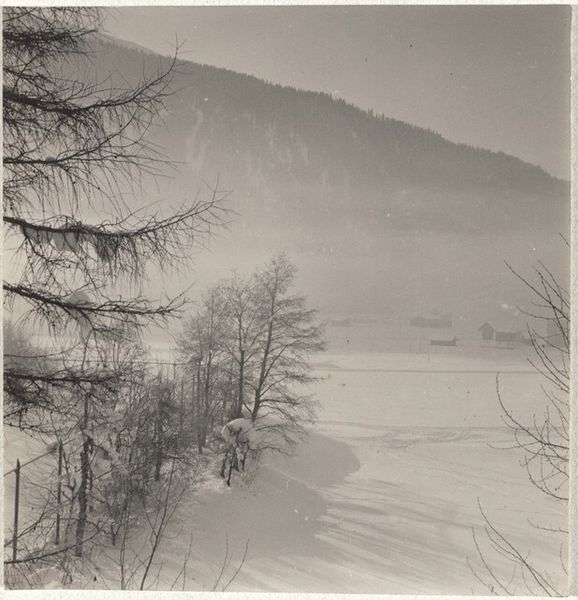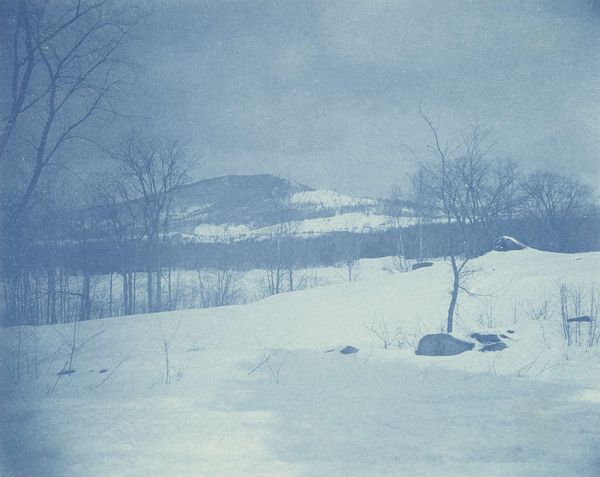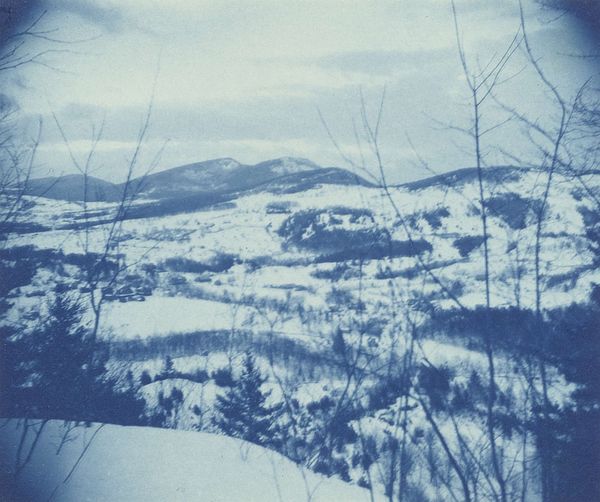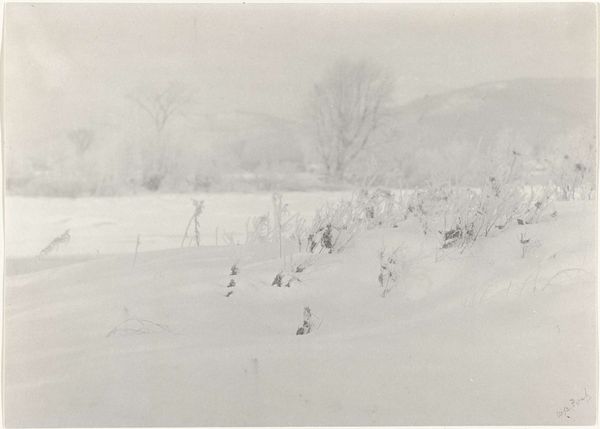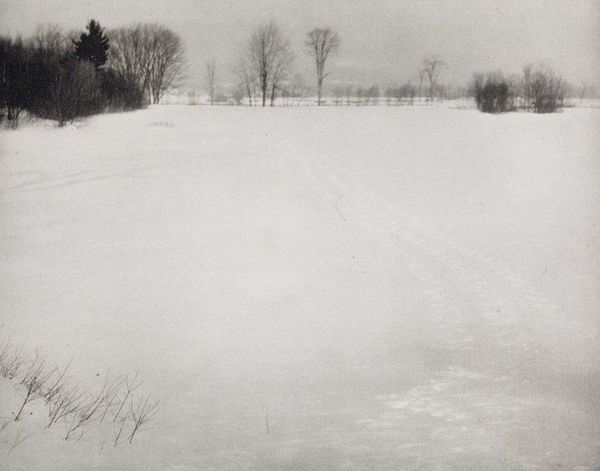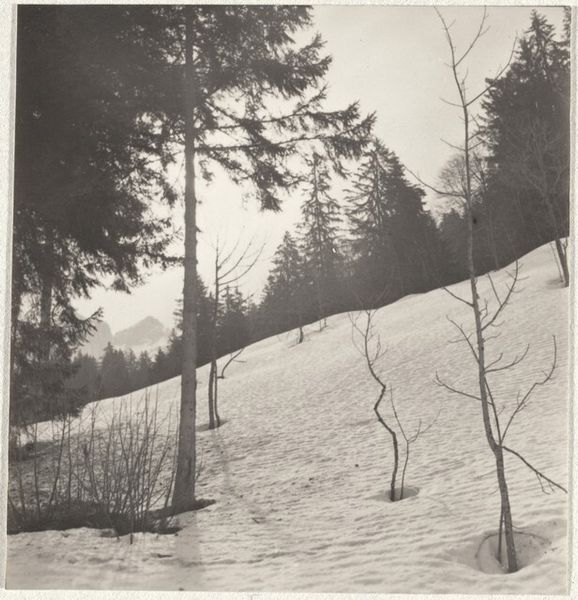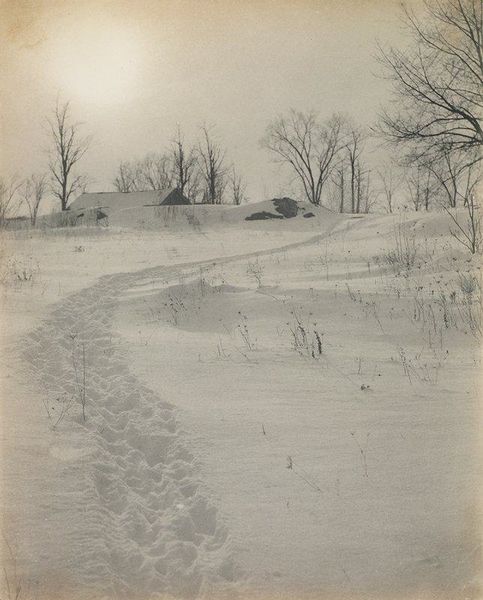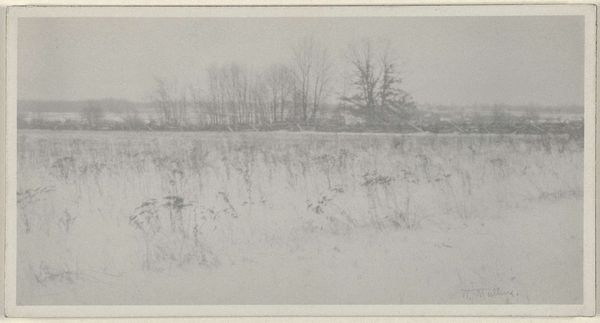
Dimensions: height 238 mm, width 192 mm, height 355 mm, width 280 mm
Copyright: Rijks Museum: Open Domain
Editor: This is William Boyd Post's "Sneeuwlandschap," created sometime between 1880 and 1915. It's a gelatin-silver print, and the vast whiteness is so striking. What speaks to you most about this photograph? Curator: The material processes interest me. Consider the shift from albumen to gelatin-silver prints during that period. Gelatin silver allowed for sharper details and mass production, altering photographic practice itself. How does this mechanization influence the perceived 'authenticity' of the landscape depicted? Editor: That's interesting; I hadn't considered the mass production aspect. So, it’s not just a depiction of a snowy landscape but a product *of* its time? Curator: Precisely. The seemingly untouched scene belies the industrial process that created it. Look closely – the repetitive marks on the snow suggest a path, perhaps made by ski. How does that introduce human labor into this supposedly ‘natural’ landscape? Also the use of "Plein-air" photography, what does the artist seek through the means of the depiction? Editor: I see what you mean. The ski tracks, if that’s what they are, suggest a human presence, almost a claiming of the space. So, is the photograph ultimately a document of both nature and industrial society, shaped by production processes and physical human interaction? Curator: Absolutely. It pushes us to examine the relationship between representation, production, and the social shaping of landscape. Editor: That's given me so much to think about, seeing the image in terms of material production. Curator: Indeed. By questioning the means of production, we unveil deeper layers of meaning.
Comments
No comments
Be the first to comment and join the conversation on the ultimate creative platform.

